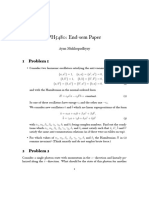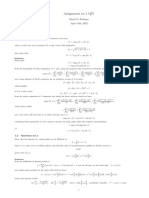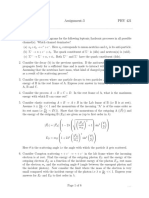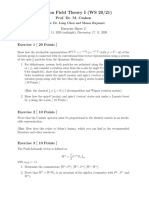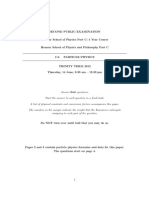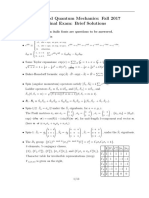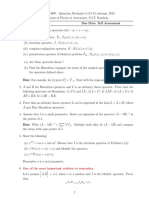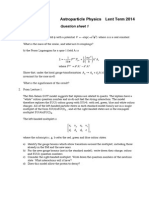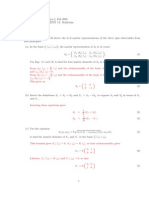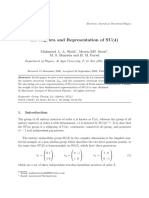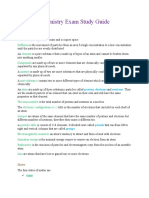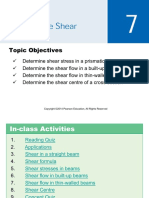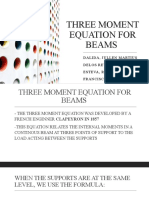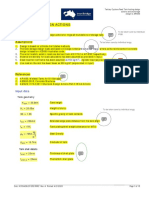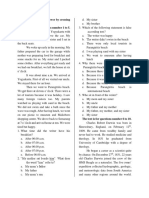PHYS 6213: Advanced Particle Physics
Problem Set 1 – due February 02
PROBLEM 1: Gauge Transformation in QED
The interaction Lagrangian density of the quantum electrodynamics for the electron
[ψ(x)] and the photon [Aµ (x)] is
LI = ψ̄(x)iγ µ Dµ ψ(x)
where ψ̄ ≡ ψ † γ 0 , γ’s are the Dirac gamma matrices, the covariant derivative is Dµ =
∂µ + ieAµ Q, e is the charge of the proton, and Q is the Hermitian charge operator that
does not depend on space and time. Let us consider the local U(1) gauge transformation
ψ ′ (x) = e−iθ(x)Q ψ(x) .
(a) Apply the eigenvalue equation of Q for an electron field, find ψ ′ (x) and ψ̄ ′ , then
find ∆L for L′ = L + ∆L under the U(1) gauge transformation, where L is the
original Lagrangian.
(c) Find A′µ under the U(1) gauge transformation such that the Lagrangian density is
invariant.
PROBLEM 2: The Adjoint Representation of SU(2)
Let us consider three 3 × 3 matrices Gi with elements given by
(Gi )jk = −ih̄ǫijk i, j, k = 1, 2, 3
where j and k are the row and column indices.
(a) Show that Gi ’s satisfy the angular momentum commutation relations:
[Gi , Gj ] = ih̄ǫijk Gk .
(b) Find the matrix G3 , then calculate the eigenvalues λi and normalized eigenvectors
|λi i of G3 .
(c) Find a unitary matrix that transforms G3 to J3 for j = 1 with J3 being diagonal
1 0 0
J3 = h̄ 0 0 0
.
0 0 −1
N.B. This unitary matrix transforms the Cartesian space representation of the angular
momentum operator Gi to its spherical basis representation Ji for j = 1. This problem
is helpful in understanding the spin of photon.
�PROBLEM 3: The Conjugate Representation of SU(2)
For a doublet (ψ) of two particles with isospin−1/2, the SU(2) transformation is
often expressed as
!
ψ1 ~
′
ψ = Uψ, ψ = α) = ei~α·t
, U(~
ψ2
where ~t = ~σ /2, α’s are the real group parameters, and σ’s are the Pauli matrices.
(a) For every 2×2 unitary matrix U with unit determinant, find a real matrix S which
connects U to its complex conjugate matrix U ∗ through the similarity transforma-
tion S −1 US = U ∗ . Hint: It is easier to consider an infinitesimal transformation
U(~ǫ) = ei~ǫ·~t, where ~ǫ is a constant infinitesimal vector.
(b) The conjugate representation of SU(2) transforms as
ψ ′∗ = U ∗ ψ ∗ .
Show that
(Sψ ′∗ ) = U(Sψ ∗ ).
This means that Sψ ∗ has the same transformation properties as ψ. Thus we can
define
φa ≡ ǫab φb = ǫab (ψ b )∗ = (Sψ ∗ )a ,
where ǫ12 = 1, ǫ21 = −1, ǫ11 = ǫ22 = 0, such that φ′ = Uφ.
(c) Let us choose ψ 1 and ψ 2 to be eigenvectors for the isospin−1/2 representation or
the fundamental representation of SU(2), with eigenvalues ±1/2 for the diagonal
generator t3 ,
!
1 1 ψ1
1
t3 ψ = ψ 1 , t3 ψ 2 = − ψ 2 , ψ =
2 2 ψ2
Find the eigenvalues of t3 operating on ψ 1∗ and ψ 2 .
∗
(d) Find the isospin doublet N̄ in the conjugate representation with p̄ and n̄ and
construct the isospin states for a composite system of a nucleon-antinucleon pair
(N N̄ ), with I = IN + IN̄ , and
!
p
N= .
n






